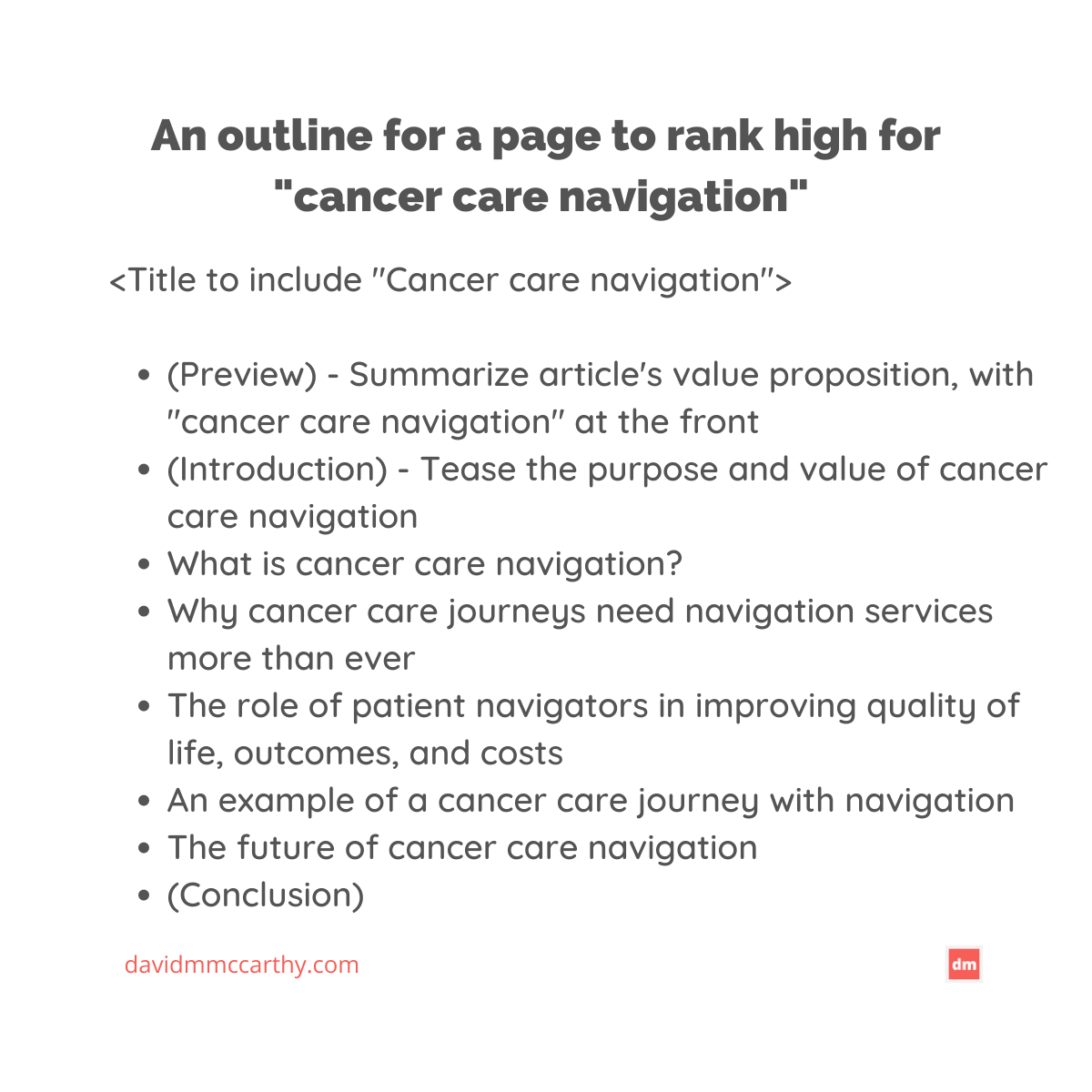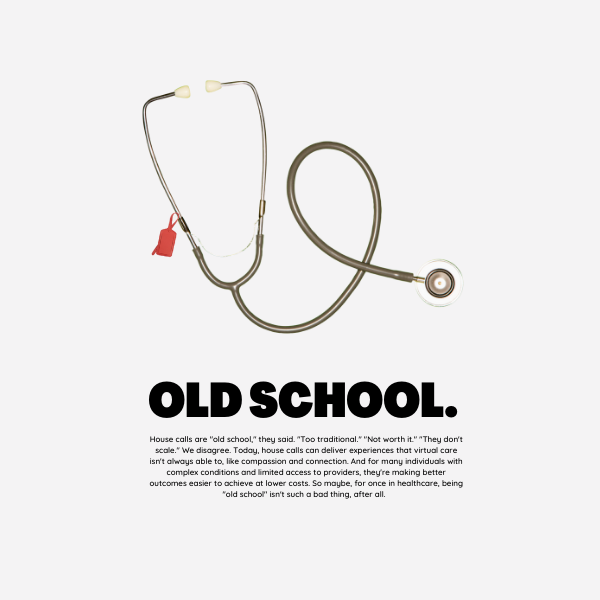The Differential | #1
David McCarthy
An ambitious rebrand, a massive audience acquisition, a timely, masterclass of a survey, and a plead to experiment more on LinkedIn.
Some B2B healthcare marketing headlines
Optum, unsurprisingly, is doing what nearly every marketing team wants to do: become a media company. The Minnesota-based services organization is teaming up with Red Ventures “to combine consumer healthcare news and information with online pharmacy and telehealth services. The joint venture, RVO Health, supports UnitedHealth Group's plan to build consumer brand awareness around its Optum healthcare services subsidiary.” Read more.
Sword Health, a provider of virtual and digital physical therapy, rebranded. And with their new brand identity, they’ve also expanded their ambition: “At this pivotal moment in Sword Health’s journey, our ambition is to provide the new gold standard in care and pain treatment for our patients. To set the benchmark by which all other pain treatments are compared. To get people back to really living their lives.” Read more.
Promoted on paid LinkedIn a year after the product launched (note: I would love to see that CTR and CPL), Ginger’s ebook “Extending Vital Mental Health Benefits to Teens” covers how the Headspace acquisition’s virtual care model “improves access and outcomes for working parents and their families.” (Ginger has a savvy content marketing team. They wonderfully cover many of the routine mid-funnel and bottom-funnel content questions/needs buyers have that senior execs may not consider to be “the most creative” ideas, my favorite being their “Ginger Starter Guide,” an aesthetically pleasing, super-high-intent asset.) Learn more.
Health Tech Nerds and OMERS Ventures conducted a joint survey with more than 150 healthcare startup operators and investors “for perspectives on changing conditions” economically and their impact on the private health tech market. Read the survey.
Pareto Intelligence launched an interactive analysis on risk adjustment transfer payments. I understand about two percent of what the analysis finds, but I’d bet that with the right amplification, this piece garners the company numerous valuable backlinks, a critical element for SEO. Open the report.
Evernorth, Cigna’s healthcare services brand, is revving up its marketing engine. It recently published in article in Wall Street Journal. It’s begun to dabble in retargeting via display (but it only accounts for 0.22% of their traffic, according to SimilarWeb). And their library has grown considerably, covering topics on biosimiliars, gene therapy, diabetes management, and behavioral health. (Marketing hiring at the services brand seems to be picking up as well.) Visit the library.
Transcarent released a new episode of its podcast/video panel, Titans of Healthcare. In the latest, Glen Tullman of Transcarent; Lee Shapiro of 7wire Ventures Ventures; Jennifer Schneider, MD, CEO of Homeward; Naomi Allen of Brightline; and Jared Taylor of Slice of Healthcare discussed how to deliver “enjoyable health and care experiences to aspects of health care that are costly, confusing, complex, and underserved in today's system.” Listen to/watch the episode.
Optum, with help from The Advisory Board, is leading a Becker’s webinar on seeing the whole picture for whole-person health. Visit the landing page.
And now, some data on content marketing



A Differential diagnosis
LinkedIn campaign testing
TL;DR: Create three to four ad variations for each LinkedIn campaign.
For B2B healthcare and health tech companies, LinkedIn is a common-sense social platform to build visibility. It’s the social platform I would recommend healthcare companies spend time on (for now), especially since the platform, thanks to adjustments to its algorithm, has evolved into essentially a micro-blogging space.
But in my experience, most B2B healthcare marketing teams are not experimenting enough on the platform. Not enough experimentation with organic content and especially not enough with sponsored updates and campaigns, where you can target a group of specific companies.
In an industry where interviewing enterprise buying teams is painfully difficult, at least in my experience, LinkedIn sponsored posts and campaigns can be a decent proxy for market research. You can get feedback relatively quickly, on everything from value proposition messaging to campaigns promoting a premium piece of content.
What can you experiment with? A lot. For example, if you were promoting a new voice-of-the-customer report and wanted to learn which ad image types generated the highest click-through rate, you could use these ad variations:
Ad 1 - Feature a lifestyle image
Ad 2 - Feature a thumbnail of the report
Ad 3 - Feature profile pictures of featured speakers/customers/authors
Ad 4 - Use text only
The options can be limitless, but be sure to choose only one variation at a time (e.g., avoid testing new copy with every new image).
Napkin drafts of marketing plays
An outline to rank high for “Cancer care Navigation”
Cancer care coordination and navigation is having a much-deserved moment.
In late June, CMS announced its new Enhancing Oncology Model, and in its July 4 issue, Modern Healthcare’s cover story, “Telehealth provides extra layer of oncology care,” addressed the topic as well.
This momentum may prompt a sprint among marketing teams to “own” the topic; a pillar page on the subject could be a worthwhile long-term play for a company in that space.
Here’s a very rough outline I would work with to rank for that keyword phrase, with the goal of providing a unique point of view in each section rather than copying the messaging from pages that currently rank:
Some on-page tactics I would also consider:
Aim for 1,000-plus words, and write for a reader at the high school level
Feature quotes from experts at ASCO, American Cancer Society, and Oncology Nursing Society; ask them to link to the article from their website
Include any proprietary data your brand is open to sharing
Add images (with metadata optimized for search) or featured quotes for every scroll
If a consumer brand designed a B2B healthcare ad
Nike (and their agency of choice) has designed some of the most iconic ads in history. What if they designed one for home healthcare?
On Marketing tactics
Very brief ads on LinkedIn drive the best results, right? Metadata’s new research suggests otherwise. See the study.
The new play in SEO? It’s no longer the skyscrape technique. It’s “information gain.” Read more.
SEO isn’t the most leveraged channel in B2B healthcare content (sometimes for good reasons), but pillar pages are still a strong play for the topics that businesses want to be associated with. See examples.
Finally, a brief disclaimer
I reference and link to many healthcare brands in the newsletter. Including them does not signify an endorsement of their business.


